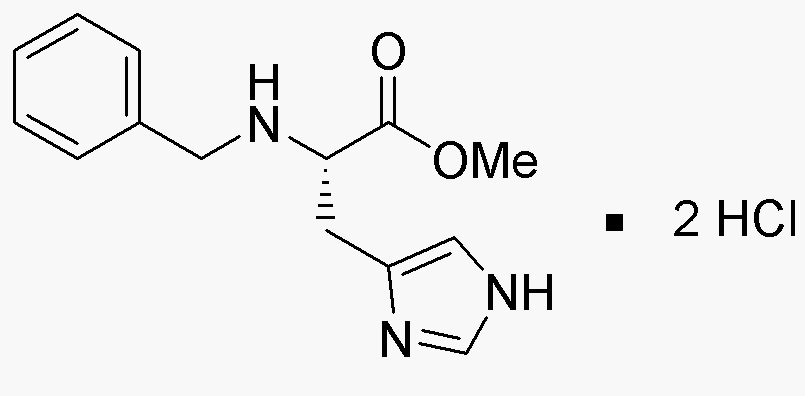Na-Benzyl-L-histidine methyl ester dihydrochloride is widely utilized in research focused on:
- Peptide Synthesis: This compound serves as an important building block in the synthesis of peptides, which are crucial in drug development and biochemistry.
- Pharmaceutical Development: It is used in the formulation of pharmaceuticals, particularly those targeting neurological and metabolic disorders, due to its ability to cross the blood-brain barrier.
- Biochemical Research: Researchers use it to study protein interactions and enzyme activities, helping to unravel complex biological processes.
- Diagnostic Applications: The compound can be employed in the development of diagnostic tools for various diseases, enhancing the accuracy of medical testing.
- Drug Delivery Systems: Its unique properties make it suitable for creating advanced drug delivery systems, improving the efficacy and targeting of therapeutic agents.
General Information
Properties
Safety and Regulations
Applications
Na-Benzyl-L-histidine methyl ester dihydrochloride is widely utilized in research focused on:
- Peptide Synthesis: This compound serves as an important building block in the synthesis of peptides, which are crucial in drug development and biochemistry.
- Pharmaceutical Development: It is used in the formulation of pharmaceuticals, particularly those targeting neurological and metabolic disorders, due to its ability to cross the blood-brain barrier.
- Biochemical Research: Researchers use it to study protein interactions and enzyme activities, helping to unravel complex biological processes.
- Diagnostic Applications: The compound can be employed in the development of diagnostic tools for various diseases, enhancing the accuracy of medical testing.
- Drug Delivery Systems: Its unique properties make it suitable for creating advanced drug delivery systems, improving the efficacy and targeting of therapeutic agents.
Documents
Safety Data Sheets (SDS)
The SDS provides comprehensive safety information on handling, storage, and disposal of the product.
Product Specification (PS)
The PS provides a comprehensive breakdown of the product’s properties, including chemical composition, physical state, purity, and storage requirements. It also details acceptable quality ranges and the product's intended applications.
Certificates of Analysis (COA)
Search for Certificates of Analysis (COA) by entering the products Lot Number. Lot and Batch Numbers can be found on a product’s label following the words ‘Lot’ or ‘Batch’.
*Catalog Number
*Lot Number
Certificates Of Origin (COO)
This COO confirms the country where the product was manufactured, and also details the materials and components used in it and whether it is derived from natural, synthetic, or other specific sources. This certificate may be required for customs, trade, and regulatory compliance.
*Catalog Number
*Lot Number
Safety Data Sheets (SDS)
The SDS provides comprehensive safety information on handling, storage, and disposal of the product.
DownloadProduct Specification (PS)
The PS provides a comprehensive breakdown of the product’s properties, including chemical composition, physical state, purity, and storage requirements. It also details acceptable quality ranges and the product's intended applications.
DownloadCertificates of Analysis (COA)
Search for Certificates of Analysis (COA) by entering the products Lot Number. Lot and Batch Numbers can be found on a product’s label following the words ‘Lot’ or ‘Batch’.
*Catalog Number
*Lot Number
Certificates Of Origin (COO)
This COO confirms the country where the product was manufactured, and also details the materials and components used in it and whether it is derived from natural, synthetic, or other specific sources. This certificate may be required for customs, trade, and regulatory compliance.


